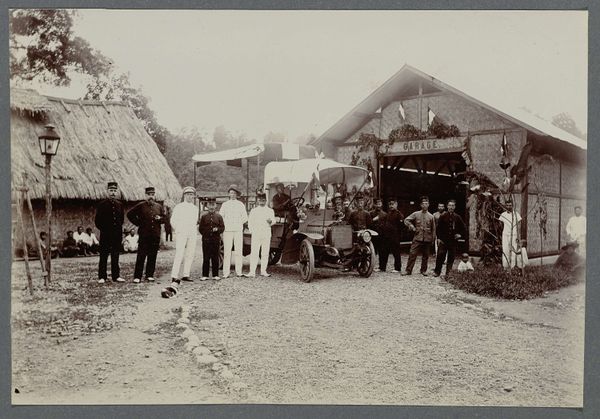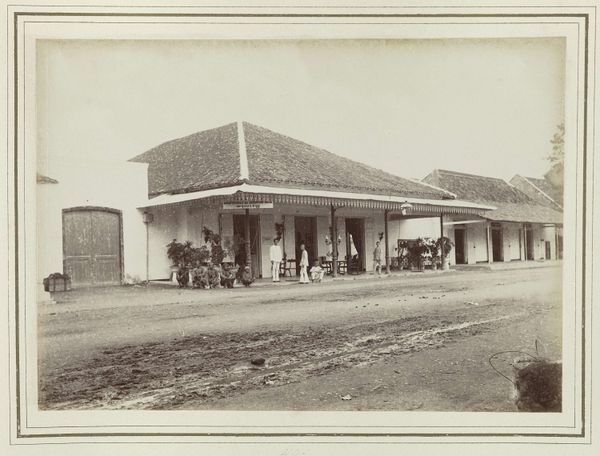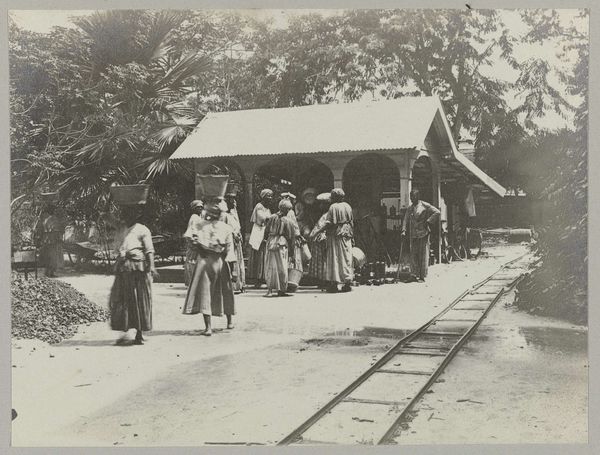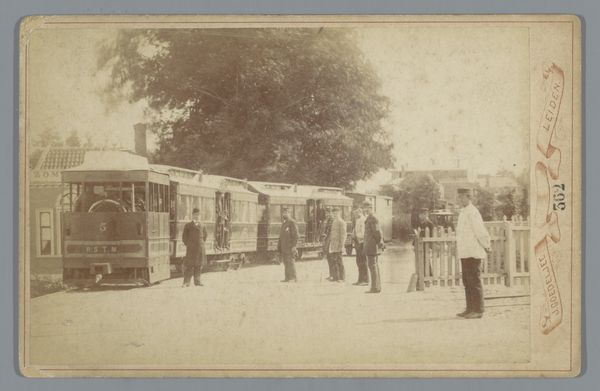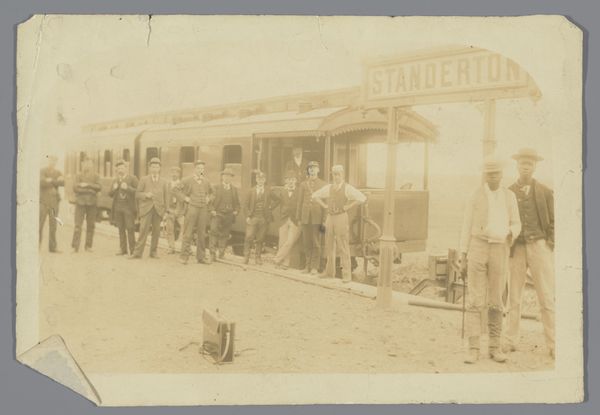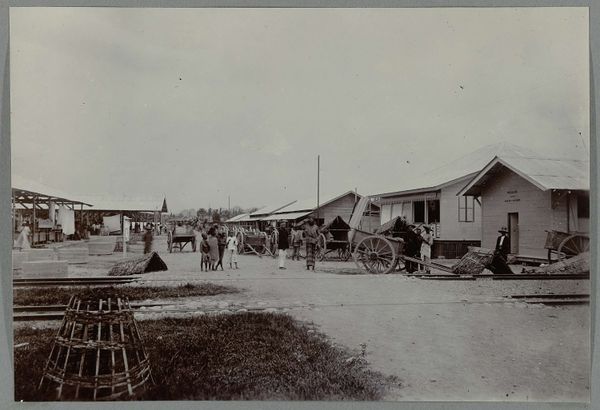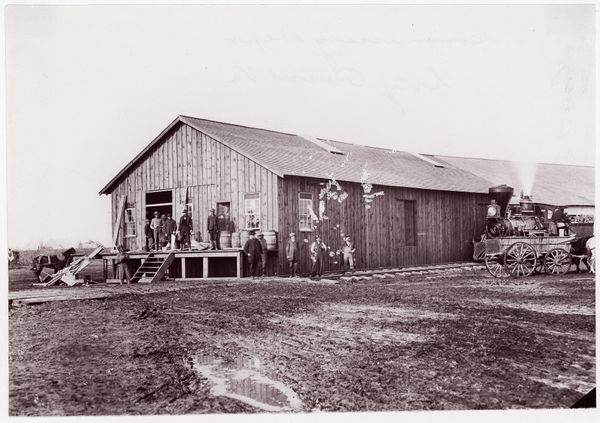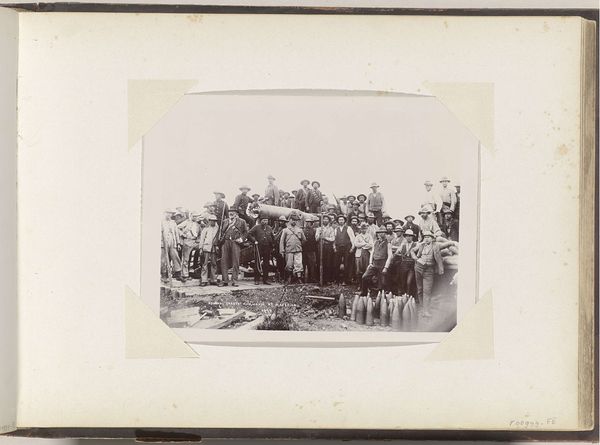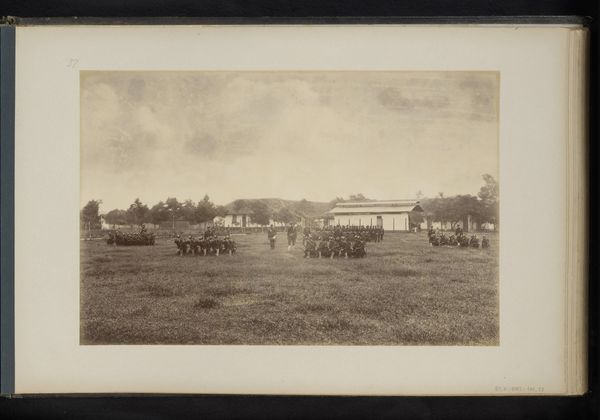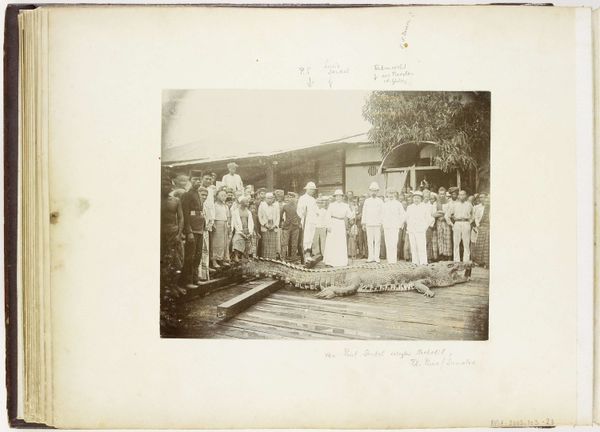
photography
#
portrait
#
photography
#
historical fashion
#
group-portraits
#
orientalism
#
history-painting
#
realism
Dimensions: height 109 mm, width 180 mm
Copyright: Rijks Museum: Open Domain
Curator: Good morning, everyone. Welcome. I'd like to direct your attention to this captivating photograph titled "Officieren met auto in bivak Lampahan," dating from somewhere around 1903 to 1913, created by an anonymous artist. Editor: There's a striking, almost performative quality to the whole composition, isn't there? The symmetrical framing with the building centered behind this early motorcar, plus that crowd. Curator: Indeed. Let's start with the forms. The sharp lines of the building contrast dramatically with the natural textures of the vegetation encroaching on its sides, also the contrast between the vehicle's strong structure versus the attire of those around. Note the repetition of geometric shapes—the rectangular building facade, the cylindrical car tires—each establishing a controlled sense of pictorial organization. Editor: While you dissect forms, I am looking at materials and how this image documents resource use at the time. We're seeing the crude garage made of locally sourced, likely indigenous, materials juxtaposed with the foreign automobile. What sort of labor went into the maintenance of these vehicles in what looks like quite a remote place? What raw goods made all this work? Curator: Interesting questions to ponder about globalized economy. Looking simply at composition now, the arrangement, primarily divided horizontally, and with a varied group. Editor: How fascinating to consider, isn't it? What are the stories behind all those faces. What were the officers doing, and who were all these bystanders watching them doing it. Curator: Yes, but there is the symbolism that the vehicle may represent in comparison to its operator and observers. The faces become less distinct the farther from the camera and closer to the doorway. The composition frames them within a moment of documented colonial power. Editor: The question is why? What were their social and material relations and motivations at the time of documentation? Perhaps answers might reside in other contemporary images depicting comparable subjects in nearby places, with closer readings to determine possible relations within the series and in relation to their colonial settings. Curator: A perspective with distinct, profound possibilities! Now, shifting back towards formalism, notice the use of light and shadow and tone of gray that all contribute to an almost dreamlike sense of detached stillness and nostalgia. Editor: Right, right! So much context is required when analyzing this scene. By thinking critically about what makes the object, we understand more regarding how objects change lives, and have histories intertwined between all peoples across globe. It also invites the chance for collective responsibility to remember that these representations exist today. Curator: Very well said, with an optimistic view and deeper understanding regarding the art, in light of that social history, the artwork now offers so much regarding our own perspective of the present as well. Editor: Indeed, a good point. And how might it prompt dialogues within other relevant works and other people going forward as they contemplate what these images propose to a public audience?
Comments
No comments
Be the first to comment and join the conversation on the ultimate creative platform.
